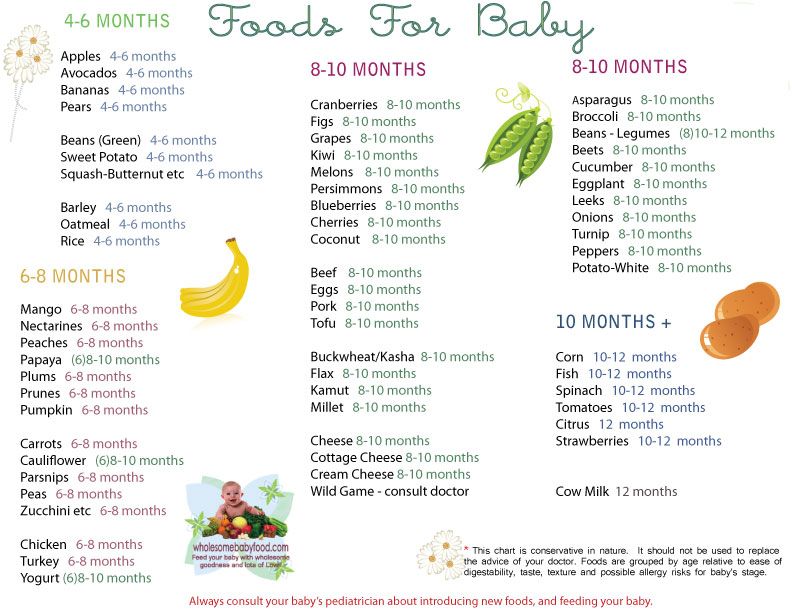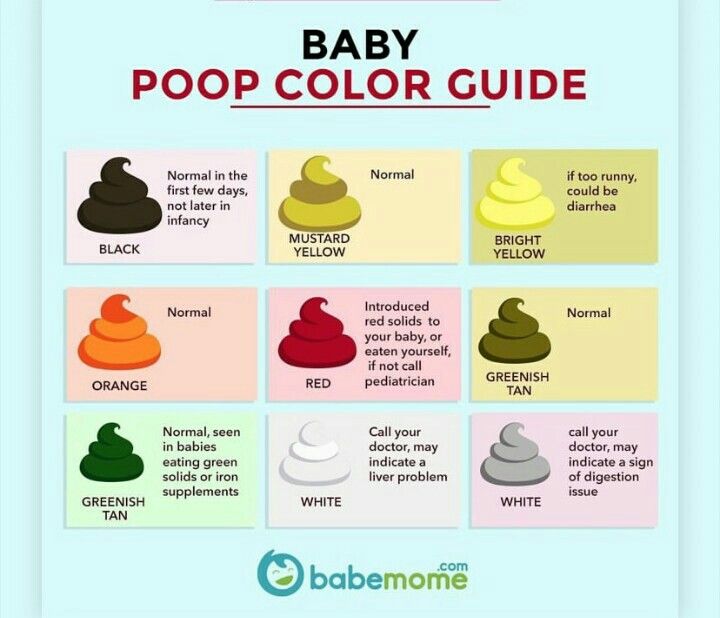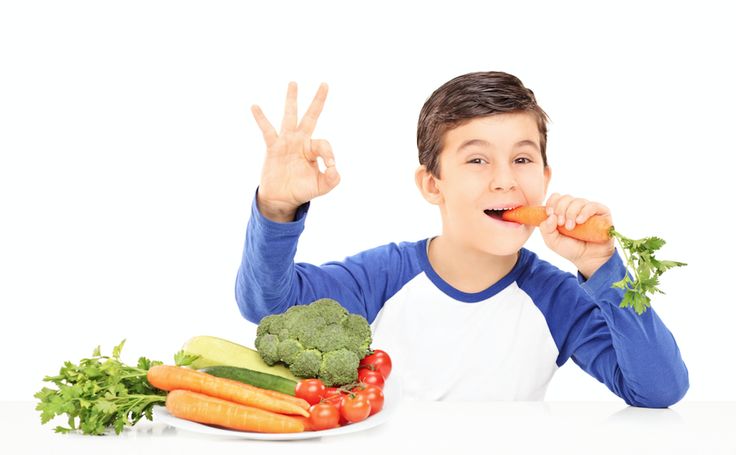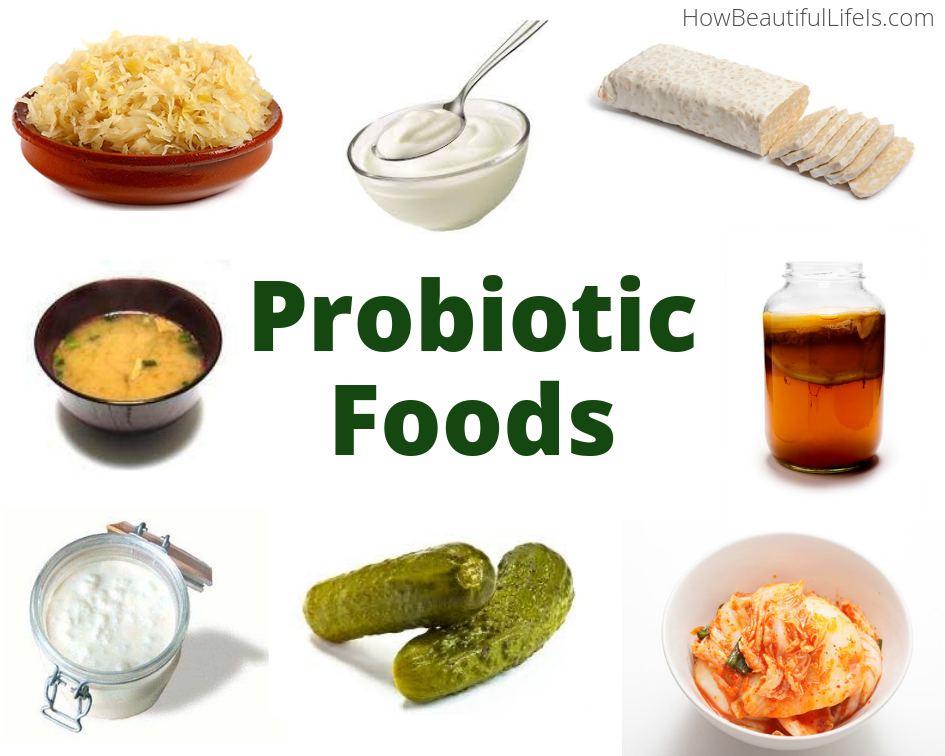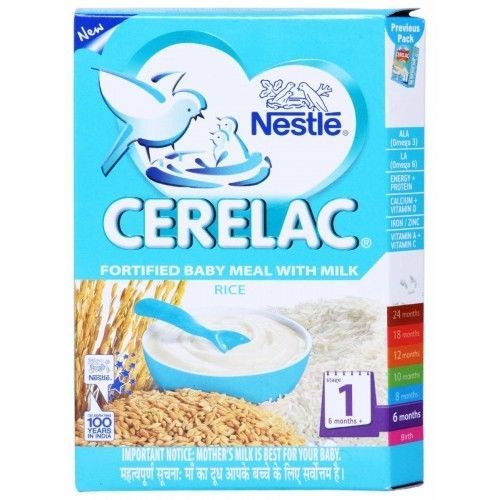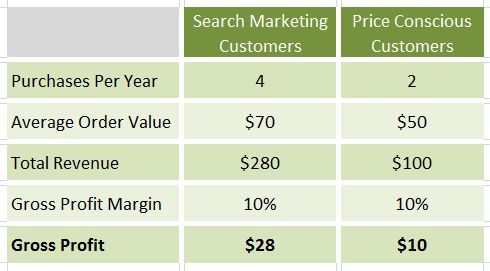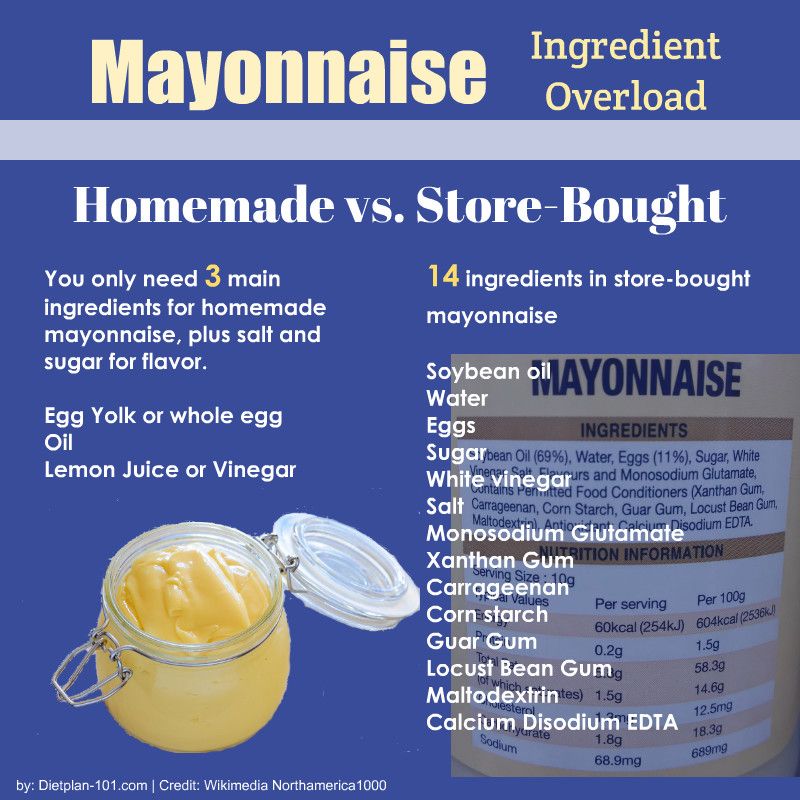Stage 3 baby food is for what age
When is a child ready to try thicker solids?
Your baby’s made it through cereal mush, soupy carrots and ever-so-slightly texturized chicken and squash dinners. Now it’s time for the real culinary fun to start — welcome to Stage 3 baby food!
“Once your baby has successfully eaten Stage 2 foods, which have some texture to them, they can start Stage 3,” says Dr. Melanie Custer, a pediatrician at West Bend Pediatrics, Children’s Wisconsin.
How do you know your baby is ready to make the leap from purees to slightly more sophisticated fare? Here, experts and parents weigh in on moving on to Stage 3 baby food. Time to dig in!
What is Stage 3 baby food?
Most jars of Stage 3 baby food are still pretty pureed (hence, the jars), but your little one needn’t be restricted solely to foods that are, for all intents and purposes, mush. Instead, you can steer your budding gourmand toward soft, small pieces of whatever you’re having. Think: cut-up pieces of turkey meatballs, banana chunks and small squares of tofu.
“Stage 3 baby foods are thick blended foods with chewable chunks, such as the kind you find at the grocery store, or small cut-up pieces of easily chewed table foods, which are usually referred to as ‘finger foods’,” says Dr. Kristen Treegoob, a pediatrician at Children’s Hospital of Philadelphia. (Avoid placing chunks of food in blends and purees, as it may cause a choking risk.)
“Stage 3 baby foods are thick blended foods with chewable chunks, such as the kind you find at the grocery store, or small cut-up pieces of easily chewed table foods, which are usually referred to as ‘finger foods.'”
DR. KRISTEN TREEGOOB, PEDIATRICIAN
And be sure to bear in mind that every child is different and develops at their own individual pace. Check with your child’s doctor for baby food recommendations during the first year.
When to start Stage 3 baby food
“Typically, 9 months is the age babies start eating Stage 3 foods,” says Dr. Zulma Laracuente, a pediatrician in Alexandria, Louisiana. “But, generally-speaking, 9 to 12 months is considered a time of slowly transitioning your baby to table food.” (In other words, no more cooking and serving separate meals!)
“But, generally-speaking, 9 to 12 months is considered a time of slowly transitioning your baby to table food.” (In other words, no more cooking and serving separate meals!)
Does that mean you baby is ready to tuck into a T-bone steak with a side of broccoli rabe? No. At least, not in the traditional form. But as long as food is small and very easy for baby to work through, it’s OK.
While the idea of having your 10-month-old feed themselves while you sit down to your own meal probably sounds heavenly, bear in mind, every child gets there in their own time.
“My first child couldn’t wait to eat mashed up meatballs and soft carrots on his own,” says mom of two Jennifer Reilly of New York City. “But my second? Not so much. Aside from puffs, I was still spoon-feeding him at nearly a year!”
Signs baby is ready to start Stage 3 or finger food
As your baby’s oral skills and hand-eye coordination develop, they’re moving closer to being able to feed themselves, either with their hands or a spoon.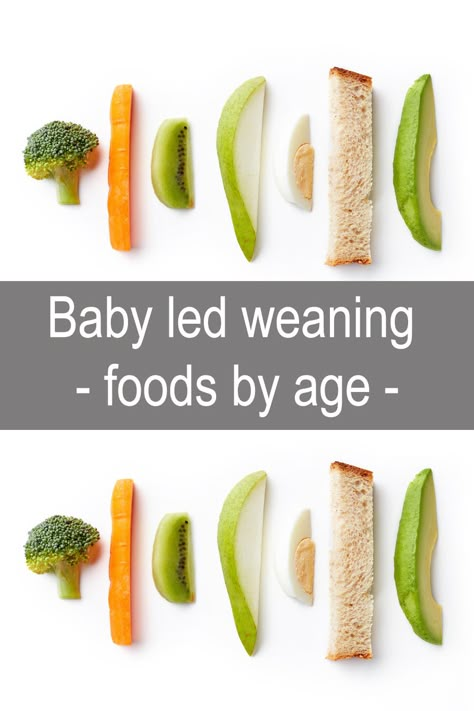 (Though, according to the Cleveland Clinic, babies usually don’t get the hang of utensils until at least 12 months.)
(Though, according to the Cleveland Clinic, babies usually don’t get the hang of utensils until at least 12 months.)
According to Jenifer Thompson, R.D., an advanced practice dietician at Johns Hopkins in Baltimore, babies can move past traditional baby foods and onto “pick-ups” (finger foods) as their pincer grasp skills are honed.
“By the time baby is between 8 to 12 months old, they should be able to pick up small, soft pieces of finger foods with their finger and thumb and bring them to their mouth,” she says.
Other signs your baby is ready to take meal time into their own hands? They tell you — as only a baby can.
“I knew my son was ready to try table foods when he started grabbing at the spoon every time I went to feed him,” says mom of two Darcy McConnell of Garwood, New Jersey. “Even though he didn’t actually use a fork or spoon for a few months, he loved holding on to them while he picked up his food. It was so cute!”
What Stage 3 foods to start with
Once you’ve hit the Stage 3 phase, (almost) anything goes, as long as it’s the right texture for baby. For instance, it’s OK to feed your child what the rest of the family is having for dinner, as long as you take proper precautions, such as making sure food is easy to chew and cut up into small pieces.
For instance, it’s OK to feed your child what the rest of the family is having for dinner, as long as you take proper precautions, such as making sure food is easy to chew and cut up into small pieces.
“Once babies are about 9 months old, they should safely be able to self-feed a variety of foods,” says Treegoob.
At this point in your baby’s life, solid food is starting to make up a significant part of their diet, so it’s important to offer foods that are nutritious. Also, exposing your child to different foods that are nourishing from an early age can help lay the groundwork for good, long-term habits.
“Parents should introduce a variety of healthy foods from different food groups with different textures by the end of the first year in order to help with healthy eating habits,” says Thompson.
“Parents should introduce a variety of healthy foods from different food groups with different textures by the end of the first year in order to help with healthy eating habits.
jenifer thompson, advanced practice dietician”
Here are a few good choices for Stage 3 foods, according to Thompson and Treegoob:
- Well-cooked vegetables of any variety.
- Ripe fruits of any variety. (Mashed or cut-up bananas work very well at this stage.)
- Shredded meat.
- Scrambled eggs.
- Soft cheese.
- Cooked pasta.
- Small pieces of tofu.
Which foods to avoid during Stage 3
When your baby starts eating what the rest of the family is having, by all means, rejoice over having to prepare fewer dishes. However, if you’re hitting up the drive-thru after soccer practice with your older kid, skip the Happy Meal for your baby, regardless of how you serve it.
“When it comes to feeding babies, I recommend avoiding heavily salted or sweetened foods, as well as fast food,” says Treegoob.
The reason doctors advise being mindful of baby’s salt intake? In addition to it possibly contributing to bad eating habits overall, a 2011 study published in the European Journal of Clinical Nutrition found that infants who consumed over 400 milligrams of sodium per day (the maximum UK recommendation for children up to age 12 months) were potentially at risk of “harming developing kidneys” and causing “high blood pressure in later life.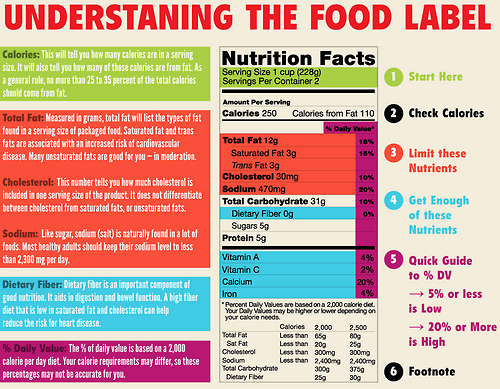 ”
”
According to Treegoob, parents should also avoid any foods that may pose a choking risk to children, such as:
- Popcorn.
- Whole grapes.
- Whole peanuts.
- Raisins.
- Hot dogs.
- Hard candy.
- Seeds.
And finally, parents and caregivers should understand how long baby foods last and forgo giving a baby honey until after their 1st birthday, as it can cause a botulism infection.
How to start Stage 3 foods safely
As with Stage 1 and Stage 2 baby food, babies still should eat sitting upright with an adult nearby.
“Once an infant is ready for Stage 3 solids and is able to finger feed themselves, it’s still important to watch your baby eat, so you can help pace them and identify signs of choking early,” says Treegoob. “You can also offer them sips of formula, breast milk or a little water every few bites when they begin eating more than a few ounces at a time of Stage 3 foods to make sure they don’t eat too quickly. ”
”
“Once an infant is ready for Stage 3 solids and is able to finger feed themselves, it’s still important to watch your baby eat, so you can help pace them and identify signs of choking early.”
DR. KRISTEN TREEGOOB, PEDIATRICIAN
Also, be sure the food you’re giving your baby is prepared for their developmental stage. According to Kids Health, parents should slice food up into small pieces in addition to cooking it a little longer in order to make sure it’s very soft. (And, of course, check the temperature!)
Once your baby gets a taste of “real food,” don’t be surprised if their interest in formula or breast milk wanes.
“Between 7 to 9 months, parents may notice that their baby shows interest in smaller or less frequent bottles or breastfeeds,” says Treegoob. “As long as weight remains on track and the baby is staying hydrated, there’s no cause for concern.”
According to Treegoob, babies between 4 to 6 months old typically drink between 24 to 40 ounces of breast milk or formula per day; 24 to 32 ounces from 6 to 9 months; and by 9 to 12 months, when they’re eating more table foods, that volume can decrease to as low as 16 to 24 ounces.
The American Academy of Pediatrics recommends giving baby between 4 to 6 ounces of breast milk or formula four times a day, along with three meals a day and two small snacks. What you give your little one is up to you — just make sure it’s healthy and texturally appropriate for their age.
Age, Food Ideas & Recipes
By Stage 3, breast milk or formula milk should become a supplementary diet. Training a baby to eat baby food as their main diet is one of the key things involved in Stage three baby food. Preparation must involve introducing a variety of foods that are suitable for their age in a scheduled and patterned manner to give them a wider palate and enjoy a balanced healthy meal. Babies should have ample opportunity to chew with their growing teeth and must be offered food in soft cubes or chunks that are easy to chew. Textured food combos help in digestion and learning to taste the food and trigger their taste buds.
Video: Stage 3 Baby Foods – What They Are & When to Introduce
What’s Stage 3 Baby Food?
At Stage 3 of your baby’s food sojourn, it is important to include chunky and lumpy foods. Stage 3 foods also include finger foods that babies can hold with a pincer grasp. Foods which can be sliced into bite-sized portions or mashed food with chunks to bite is the right consistency. Cooked vegetables mashed lightly or cereals with fruits diced finely are ideal to start at this stage. It is important to try various permutations and combinations of food with different tastes and textures at Stage 3. Level 3 baby food is also about introducing new eating skills ( chewing) and getting your baby to explore and learn healthy eating habits for the future.
Why is this Stage Important?
Babies at this stage must learn to roll chunks in their mouths, gnaw and chew them and finally swallow it all without choking and gagging. The whole process is a sensory practice which takes it time to develop but your baby will learn it. Stage 3 purees (especially thick) and baby foods are important as they will help the baby to learn this sensory practice. It exposes the baby to different tastes and textures. This stage is vital to develop their sensitivities to different kinds of food.
The whole process is a sensory practice which takes it time to develop but your baby will learn it. Stage 3 purees (especially thick) and baby foods are important as they will help the baby to learn this sensory practice. It exposes the baby to different tastes and textures. This stage is vital to develop their sensitivities to different kinds of food.
When to Introduce Stage 3 Food
Most parents are clueless about the age when Stage 3 foods can be introduced. Stage 3 purees and baby food with chunks can be introduced to babies at around 9 months of age. By this time your child will well have had a great deal of practice of eating smooth purees of vegetables and fruits. Babies at this stage are also on a lesser routine of breast milk or formula milk. Chunky puree food is what a Stage 3 food plan for your baby should look like and nine months of age is the right time to introduce it. By this time, kids start teething and will be looking for things to chew on to help them relieve the pain of their emerging tooth. Chunky purees are a great way to help chewing tendencies and also speed up the process of teething.
Chunky purees are a great way to help chewing tendencies and also speed up the process of teething.
How to Know if an Infant is Ready for Stage 3 Foods?
If your baby has made it through pureed, liquefied vegetables, soupy vegetables and squashed dinners, then it is probably time to move to the next stage. After about 6 months you will notice that your baby has an increased hand-eye coordination. They will be reaching out to things, trying to grab them or tip them over. All these are signs of them moving closer to becoming independent ( either with a spoon or hand). The pincer grasp develops at around 8-12 months of age and at this time babes can move past traditional pureed foods. At this time they can hold small pieces of food that are soft with their finger and thumb and bring it closer to the mouth. Babies who also start to grab things and chew them with their gums are ready to move to Stage 3. This is a clear indication that they are getting their first set of teeth and are ready to exercise their gums. Some babies will even try to grab a spoon.
Some babies will even try to grab a spoon.
Stage 3 Food Ideas
At Stage 3, any kind of food will be right as long as the texture is right. You could serve the food your family is having but make sure the chunks are easy to chew. You need to cut up the food into tinier pieces. Solid food is taking a significant role in their diet and it is important to offer foods that are nutritious. Exposing babies to a variety of foods helps them to develop taste and lays the groundwork for a life-long healthy eating lifestyle. There are a few recommended foods that are a good choice for Stage 3 foods. You could try your own varieties apart from these:
- Any kind of vegetables cooked well.
- Mashed ripe fruits ( mashed or cut bananas are great at this Stage).
- Shredded meat which is well-cooked.
- Cheese that is soft.
- Well-cooked pasta.
- Scrambled eggs.
- Tiny pieces of tofu.
How to Make a Safe Transition From Stage 2 to Stage 3?
Stage 3 foods look very different, feel different and are an entirely different sensory experience for the baby.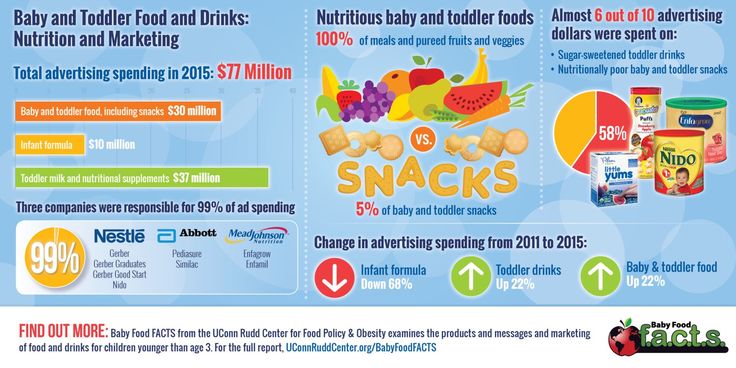 These foods come in multiple colours and different shapes, with each spoonful presenting a different texture. Instead of one smooth texture, Stage 3 introduces soft, thick, thin, squishy and rough textures. The smell of the food will be different and babies have to work their gums, mouth, jaw and tongue. Stage 3 foods need different motor skills too. Some foods need lesser effort to chew while some may need to be rolled in the mouth, gnawed and chewed. In a nutshell, a child has to make considerable effort to adapt to Stage 3 foods. Here are a few tips on how to start stage 3 foods:
These foods come in multiple colours and different shapes, with each spoonful presenting a different texture. Instead of one smooth texture, Stage 3 introduces soft, thick, thin, squishy and rough textures. The smell of the food will be different and babies have to work their gums, mouth, jaw and tongue. Stage 3 foods need different motor skills too. Some foods need lesser effort to chew while some may need to be rolled in the mouth, gnawed and chewed. In a nutshell, a child has to make considerable effort to adapt to Stage 3 foods. Here are a few tips on how to start stage 3 foods:
- Get your baby to experiment with some “ hard munchies” like celery sticks, cucumber sticks. The aim should not be for them to swallow it but munch it. It is fine if they chew and spit it out.
- The next step should be to progress to solids that will melt in the mouth. Crackers, vegetable sticks, tiny biscuits are good choices.
- The next step will be to offer soft cubes of cooked food like cubed cooked potatoes, cubed cooked carrots or bananas.
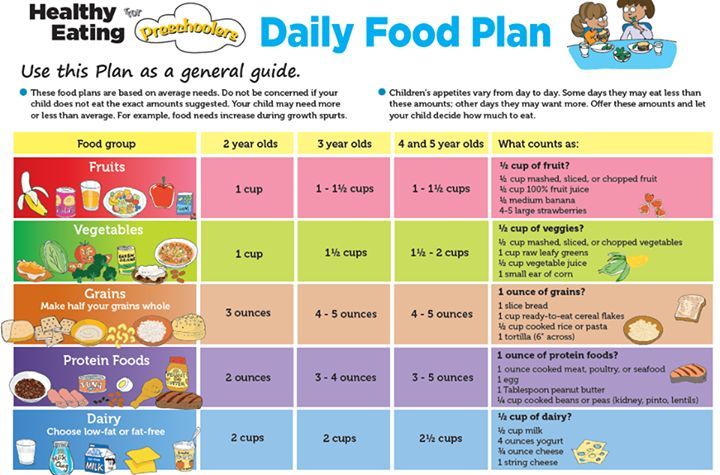
- Then try “softer” foods like cooked pasta, muffins or lunch meats.
Once babies are used to the above, they will be ready for Stage 3 foods with mixed textures and different tastes.
Healthy Stage 3 Food Recipes For Babies
A few homemade Stage 3 baby food recipes to help you get started with:
1. Carrot Pasta
A healthy meal with hidden vegetables, this is a great Stage 2 and Stage 3 food recipe for babies and toddlers. It is also a great baby-led weaning lunch or dinner.
Ingredients
- 5 medium carrots.
- ½ dry pasta ( of any shape).
- ½ teaspoon coriander.
- ½ teaspoon of orange zest.
Method
- Fill a saucepan with water to about ¾ of its capacity. Add the carrots and cook them for about 10 minutes. Stick a fork to see if they are cooked. Once cooled, drain the water and transfer it to a blender.
- Boil the drained water in the saucepan and add the pasta.
 Cook for about 5-7 minutes.
Cook for about 5-7 minutes. - Add the coriander and orange zest to the carrots and puree for about 3 minutes. Add water if necessary.
- Transfer the pasta and carrots to the saucepan and mix it well.
2. Cheese and Potato Mash
A great way of including carbohydrates and calcium to your baby’s diet, this is a great recipe that can be made in a variety of ways.
Ingredients
- ½ medium-sized potato.
- 1/3 slice of cheese.
- 2 big spoonfuls of breastmilk (optional).
- 2 big spoonfuls of formula milk ( optional).
Method
- Wash the potato and chop them in cubes.
- Cook the potato pieces in water until soft and mushy.
- Add the breast milk or formula milk to the mashed potato. Mix it well.
- Cut the cheese slice into small pieces of 0.5 cms.
- Add the cheese to the potato mixture and mix well.
- Serve it in your child’s favourite container.

3. Oatmeal With Beets And Carrot
Yummy vegetable breakfast packed with spices and raising makes for a meal that your toddler cannot resist.
Ingredients
- 2 cups of water or milk.
- 1 cup oats.
- ½ red beetroot.
- 1 carrot peeled, chopped and shredded.
- 1 teaspoon cinnamon.
- ¼ teaspoon cloves.
- 1/8 teaspoon nutmeg.
- 2 tablespoon raisins.
Method
- Bring water to a boil in a saucepan and add the carrots, beetroot, cinnamon, cloves, nutmeg and raisins. Give them a stir, cover and cook on low heat.
- Cook this until all the water is evaporated and everything is cooked well.
- Let the mixture cool.
- Once it is cooled, add the oatmeal and blend well in a food processor. Add in extra water, breast milk or formula milk if you need to.
Foods You Should Avoid In Stage 3
Although, Stage 3 is when you would want your child to work on their chewing skills, you must not rush into introducing any kind of food that could result in potential choking or reflux. You must also avoid foods that are heavily salted or sweetened foods. The following could be avoided for a couple of more months:
You must also avoid foods that are heavily salted or sweetened foods. The following could be avoided for a couple of more months:
- Raisins (whole).
- Hard sweets and candies.
- Popcorn.
- Whole peanuts.
- Whole grapes.
- Hot dogs.
- Seeds.
Warnings And Considerations
Paediatricians do recommend some stages of baby food at certain ages. Marked by age and development guidelines, these foods make the jobs of parents easy and get the child to become independent eaters. Age recommendations, however, are more of a guideline. What is important is the comfort level of the child. If your child chokes or refuses to eat Stage 3 food, then leave it and try again after a few days. You child will cough a little at the start as they start experiencing the thicker consistency and lumpier foods. This should not deter you. Keep monitoring their progress and adaptability and make alterations accordingly. The baby formula at Stage 3 can be continued along with new foods introduced. Cow’s milk must not be introduced before the baby completes one year of age. Other than a few exceptions that pose risk to the baby, Stage 3 is when you can introduce a great range of foods to the baby.
Cow’s milk must not be introduced before the baby completes one year of age. Other than a few exceptions that pose risk to the baby, Stage 3 is when you can introduce a great range of foods to the baby.
The transition from Stage 3 food to regular food will not take very long. Your baby will turn one within a few months of starting on Stage 1 foods and eating will become a family activity. Enjoy this final leap of presenting fun and delicious recipes. Keep continuing the effort even if your baby resists it until they adapt to exploring their own tastes.
Also Read:
3 Stages Of Baby Food
Introducing Solid Food To Baby’s Meal
What Should Be First Foods For Baby
Infant formula for newborns (0 to 6 months) | Baby food for babies
This is a complete baby food from the birth of a baby. If breastfeeding is not possible for some reason. Products for the smallest are called adapted, because their composition is as close as possible to mother's milk.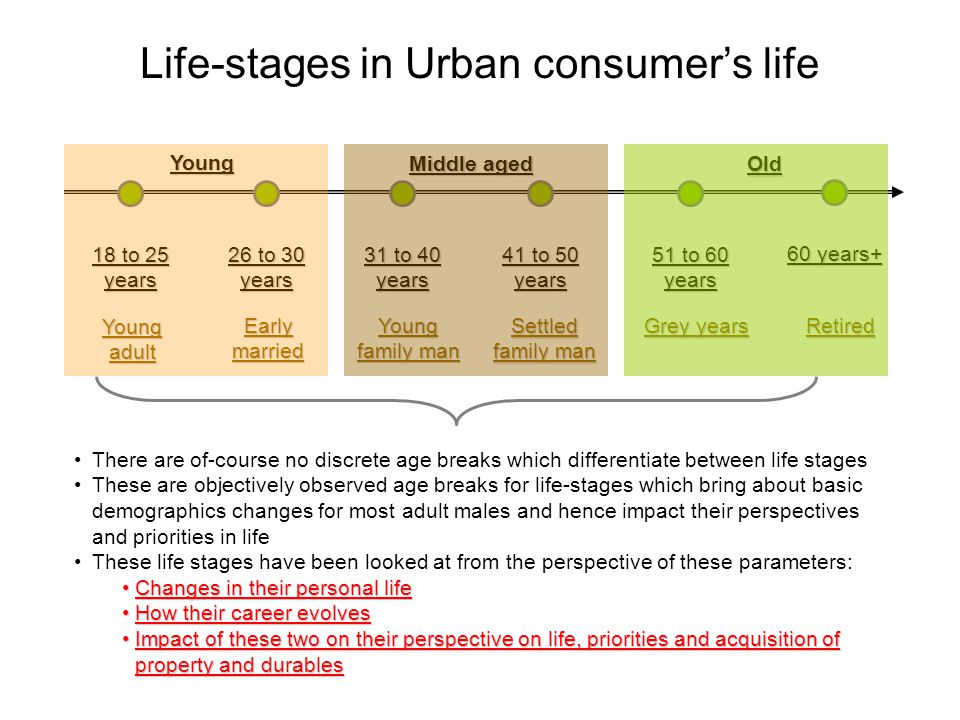
In the article we will talk about how to choose baby food for babies. Let's talk about what mixtures are for newborns, how to choose the right one, and how to understand that it did not fit. And also about the correct transition from one mixture to another. nine0003
Classification: first select the type of mixture
Baby food should be recommended by a pediatrician. Be sure to check with a doctor who knows your child. The pediatrician will take into account all the factors influencing the choice: the age of the baby, the characteristics of his health, the method of birth - naturally or through a caesarean section, the date on which he was born, the weight of the child, the risk of allergies.
Healthy babies who were born at term naturally have a digestive system that is mature for their age. They are prescribed regular baby food, which is produced according to the standards established by the Ministry of Health, which means it contains all the necessary nutrients. It is important for parents only to monitor the timely change of stage. After all, babies from six months need a different composition, which is present in products labeled with the number two. nine0003
It is important for parents only to monitor the timely change of stage. After all, babies from six months need a different composition, which is present in products labeled with the number two. nine0003
Manufacturers of adapted formulas for newborns compete in only one indicator - the proximity of the composition to breast milk. For example, the latest discovery of scientists made it possible to add oligosaccharides of mother's milk to it. They are involved in the formation of the child's immunity, which, as you know, the mother transmits when she breastfeeds. At the end of 2019, such products are considered the closest to breast milk.
Under the Materna brand, this is Materna Gold HM-O. nine0003
Read more about breast milk oligosaccharides in our article.
By age
All baby food is usually divided into age stages:
- Stage 0 - for premature babies (but not all brands have this stage)
- Stage 1 - 0 to 6 months
- Stage 2 - 6 to 12 months
- Stage 3 - from 12 months
The mixture can be fed up to 1. 5-2 years. By this time, the children are completely switching to adult food. You can supplement at night if the baby wakes up to eat. Or cook baby cereals on them. They are very nutritious and enriched with additional vitamins. Children who do not eat well are sometimes supplemented with formula. Some manufacturers create stage 4 products just for such cases. nine0003
5-2 years. By this time, the children are completely switching to adult food. You can supplement at night if the baby wakes up to eat. Or cook baby cereals on them. They are very nutritious and enriched with additional vitamins. Children who do not eat well are sometimes supplemented with formula. Some manufacturers create stage 4 products just for such cases. nine0003
There are products that are not age-labeled. This is a special diet that is prescribed by a doctor according to indications. The packaging must indicate at what age it can be used.
Composition
By composition, products for newborns can be divided into classic and enriched.
- Classic . The Materna line includes Materna Classic, Materna Gold and kosher dairy products Materna Mehadrin. They are usually suitable for all healthy children. After all, these products are created according to the norms of the Ministry of Health and contain all the necessary components for the nutrition of babies.
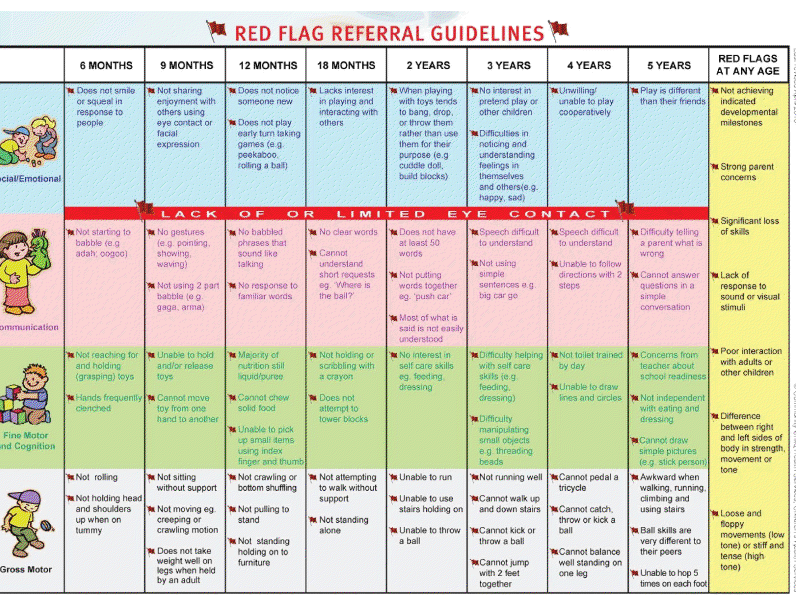 nine0026
nine0026 - Enriched . - This is a classic diet, supplemented with vitamins and trace elements. Materna has Materna Extra Care. This product has been the most popular among our customers and around the world. In 2017, for example, he was recognized as the best in Israel. Now the leading place is occupied by Materna Gold, as the product closest to breast milk.
As intended
Separately, we can talk about special baby food, which is prescribed by a doctor in accordance with the health characteristics of the baby. It can be both basic for the child and recommended for the period of illness or recovery after it. Let's look at the main types of special mixtures. nine0003
- Low lactose . Recommended for children diagnosed with dysbacteriosis or other digestive disorders. In the case when the enzymes in the intestines are not enough to digest milk sugar - lactose. In the Materna line, this is Materna Comfort.
- Lactose free .
 They are used in case of congenital lactase deficiency or galactosemia, a disease characterized by the inability to absorb certain carbohydrates. This is a very rare case. If lactase deficiency appeared against the background of indigestion, then a low-lactose product is most likely suitable. So the body is more likely to start producing its own lactase enzyme. Be sure to discuss this with your doctor. Materna Soy is a soy lactose-free product in the Israeli baby food line. nine0026
They are used in case of congenital lactase deficiency or galactosemia, a disease characterized by the inability to absorb certain carbohydrates. This is a very rare case. If lactase deficiency appeared against the background of indigestion, then a low-lactose product is most likely suitable. So the body is more likely to start producing its own lactase enzyme. Be sure to discuss this with your doctor. Materna Soy is a soy lactose-free product in the Israeli baby food line. nine0026 - Dairy-free . They are prescribed for allergies to lactose and milk protein casein. In such products, animal protein is replaced by vegetable protein. As, for example, in Materna Soy blend.
- Sour milk and goat milk . In fact, they are very close to the classical ones. The only difference is that the protein is in them in an easier to digest form.
- Antireflux to relieve the symptoms of severe regurgitation. They are thicker in consistency and more difficult to throw back into the baby's esophagus.
 Most often prescribed in addition to regular food to reduce the amount of regurgitation. nine0026
Most often prescribed in addition to regular food to reduce the amount of regurgitation. nine0026 - Hypoallergenic or hydrolysed . They are created on the basis of a split protein and are prescribed to children in cases of very serious allergies. This product is bitter in taste, kids do not like it. Therefore, it is appointed in extreme cases, when there are no other options.
- Night . Produced on the basis of starch, which takes longer to digest and maintains a feeling of satiety.
- For premature babies . They are high in protein and calories. They are designed to help the child quickly gain weight. After the indicators reach the norm, the baby is transferred to a normal diet. Read more about how to choose a formula for a premature baby, read here. nine0026
- Based on vegetable protein . They are used in case of allergy to animal protein casein. And they are the main food during the period of rotavirus infection, when the use of dairy products is contraindicated.

By consistency
Most baby products are dry mixes that are diluted in warm boiled water. But there are also ready-made diluted products that only need to be heated.
How to make the right choice
There is only one answer to this question - listen to your pediatrician and be aware of what is on the market. You can contact us for a free consultation.
Zinaida Rassadina
Pediatrician, experience - 14 years
How to tell if a mixture is not suitable
Here are some signs that you need to think about changing the mixture. But it is important to understand that there are diseases that have the same symptoms. Therefore, before changing something, you need to take tests and find out the reason. And only then choose the right food. nine0003
- Baby spits up profusely in a fountain
- The stool has a liquid or foamy consistency and an unusual, often green color
- The baby is worried after eating - he suffers from colic, bloating
- Skin rash appeared
If it happens that you need to change the food, it is important to do it gradually. Read about the correct scheme for switching to a new mixture in our article.
Read about the correct scheme for switching to a new mixture in our article.
Canned food - Making sense of age
Viktoriya Levchuk©
Parents often come across complementary feeding tables and schemes that indicate the approximate portion at each age stage, and when which product should be introduced into the child's diet. The dream of any mother is a unified policy for the introduction of complementary foods, so that the industrial production of baby food agrees with pediatricians and mothers on the age of introduction of the product into complementary foods. Some brand labels can be confusing when to use prepared foods, as well as how to combine canned food with home cooking. nine0003
The popular Gerber brand has registered trademarks labeled "1st Foods", "2nd Foods" and "3rd Foods". Other brands simply use "1", "2" or "3" or indicate the child's age in months, and some use it to indicate the stage at which a child is ready for a certain type of food consistency.
WHO Child Nutrition Stages
Contents:
The World Health Organization, in its brochure Infant and Young Child Feeding, divides childhood into several stages. These main stages are calculated up to the year of the child, they imply a smooth transition of the baby "from mother's milk to food from the family table." The most popular brands of baby food use the main stages of the transition of the child's diet in the labeling of canned food. There are four stages in total, starting at 4 months and ending at 12 months. These steps are not standardized. nine0003
You can read more about the age stages of baby food in the following articles:
- First stage of baby food: (4) 6-7 months
- Second stage of baby food: 7-8 months
- Third stage of baby food: 8- 10 months
- Fourth stage of complementary foods: 10-12 months
Food can label
Stage 1: Age at (4) 6 to 7 months
Start of complementary foods at (4) 6 to 7 months of age, includes foods from one ingredient, smooth, light consistency without a single lump, with a low level of allergy, without salt, sugar and seasonings, for example, rice porridge or zucchini puree.
Here are some examples of popular brands:
- Silent porridge Fleur Alpine from 4 months
- rice porridge HIPP from 4 months
- Rice porridge Sempler from 4 months
- puree from 4 months of
- 900 zucchini Sady pridonya from 4 months
- Gerber zucchini puree from 4 months
Stage 2: Age 7 to 8 months
When children are 7 to 8 months old, they are given one-component and two-component products, simply pureed, medium density, sometimes products that seem to rubbed, i.e. food appears in pieces that are easy to swallow, but do not choke. Products are given with a low level of allergy, but slowly they begin to introduce the child to the average.
Second step product examples:
- Bebivita vegetable soup with beef from 8 months
- Bebivita mixed vegetable puree from 7 months
- Rabbit ragout with Gerber broccoli from 8 months
- Semper veg with veal liver from 8 months
- meatballs
- Carrots with potatoes and salmon Hipp from 8 months
- Mixed vegetable puree Hipp from 7 months
- Welling oatmeal with banana and prunes Semper from 8 months
Stage 3: Age from 8 to 10 months
Between 8 and 12 months of age, babies are fed a thicker texture with bite-sized pieces that are easy to chew and swallow. There are more three-component purees. Foods with small pieces help stimulate baby's chewing. Sugar, salt and spices are still missing from baby food.
There are more three-component purees. Foods with small pieces help stimulate baby's chewing. Sugar, salt and spices are still missing from baby food.
Examples of products from the third stage:
- Hipp noodles with sea fish and vegetables in creamy sauce from 10 months
- Mediterranean risotto with sea bream Semper from 10 months
- Italian Gerber treat from 10 months
- Marmaluzi mashed potatoes with fish pieces from 9 months
- Vegetable stew with salmon and Semper rice from 9 months
3-stage jar food is very easy to find in the store. Around this period, according to manufacturers of baby food, the child's appetite increases, respectively, and the portion he consumes, so we focus on jars of 200-250 grams per serving. But usually a child is not able to eat that much at the age of 9-10 months, even if this portion is written in all textbooks on baby food. But what about throwing away the leftovers?
Calm down, around this period, many mothers begin to cook for 2 times (the dish is stored in the refrigerator for about 24-36 hours), the child's body is already strong enough and adapted to complementary foods that pathogenic microbes in the finished dish are not dangerous to him. We just follow the rules of cleanliness, namely, we took a clean spoon, put a small portion from the jar into a separate plate, put the jar in the refrigerator with the rest of the food, and warmed up the postponed dish, fed the baby. nine0003
Stage 4: 10 to 12 months
Approximately one year old, the consistency of baby food is close to that of an adult table. If by 10 months the dish is thick with pieces of food, then closer to 12 months the baby eats small pieces of food, by 1.5 years it completely eats adult dishes, only occasionally large pieces that are difficult to chew, for example, meat, are crushed by adults.
By the age of 2, the child eats completely from the common table without the help of strangers. At this point, you can continue to feed the baby with canned food or completely transfer the baby to an adult table. Parents who initially fed the baby only canned food, by about 2 years old, are transferred to homemade food, i.e. up to 2 years they do not refuse jars, simply because they are used to it and it is convenient, safe, etc. nine0003
Examples of products of the fourth stage:
- Young potatoes with green beans and Hipp rabbit from 12 months
- Italian pasta with trout in Semper cream sauce from 11 months
- Heinz0 multi-grain milk porridge apple-raspberry-blackcurrant0 from 12 months 9026 months
- Porridge Weling multi-cereal Semper from 11 months
0003
- Vegetables with rice and beef stroganoff Semper from 18 months
- FrutoNyanya apple-raspberry puree (fruit pieces) from 12 months
- Fleur Alpine Organic apple marmalade cookies from 18 months 3 years.
However, it should be noted that after a year, all age restrictions indicated on canned food most likely carry information on products allowed for a given age, and not food consistency. We also take into account that the portion for a 3-year-old child is much larger than for a one-year-old baby. For example, Frutonyan has milk porridges of 200 ml from 6 months, and 500 ml from 3 years old, the porridge can be identical in composition, the difference is only in the portion. nine0003
Canned food age recommendations
Please note that the age recommendations for each stage are only general recommendations. The age of introduction of complementary foods for each child is individual, so one will be ready at 5-6 months, and the other closer to 7 months. We look at signs of readiness for complementary foods, consult a pediatrician.
Moreover, the transition to a new consistency also occurs individually, as the baby is 7-8 months old, it is impossible to abruptly transfer the baby to thicker food or add hard pieces, there may be consequences in the form of vomiting or suffocation. It is important that the child gradually learns to chew food, with gradual complication, for effective skill acquisition. Don't forget our pediatricians, who can help a mother determine if a baby needs extra time to learn chewing skills or if it's time to move on to the next stage. nine0003
Consistency of food up to a year. Click on me!!!
And a little about baby food manufacturers. They indicate early dates for the introduction of complementary foods, this is a common marketing ploy to sell more, or they simply do not want to revise the layout of their labels, taking into account the recommendations of Russian pediatricians or the World Health Organization. Although recently, there is less and less canned food on sale, recommended from 3 months.
They indicate early dates for the introduction of complementary foods, this is a common marketing ploy to sell more, or they simply do not want to revise the layout of their labels, taking into account the recommendations of Russian pediatricians or the World Health Organization. Although recently, there is less and less canned food on sale, recommended from 3 months.
The main thing is that parents understand and know the rules and terms for the introduction of complementary foods, as well as listen to their intuition, which does not deceive. The appearance and abilities of the baby will tell parents more about the readiness for complementary foods than the age marking on canned food. nine0003
Chaos in canned food
It's a strange name for a subtitle, but it's difficult to describe in another way what is happening in the industrial production of baby food. Each brand has its own recommendations for the introduction of complementary foods, based on their data, they label jars.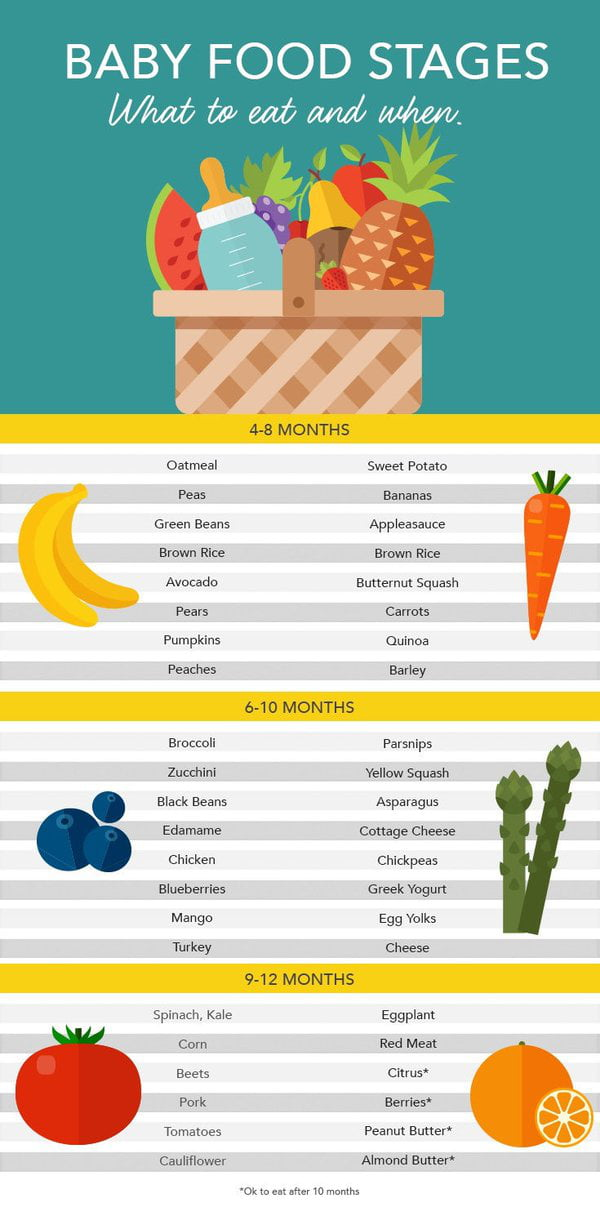 Moreover, it is very difficult to understand their logic. The first two steps are easy for many parents because in general one or two ingredient purees are easier to navigate than multi-ingredient purees.
Moreover, it is very difficult to understand their logic. The first two steps are easy for many parents because in general one or two ingredient purees are easier to navigate than multi-ingredient purees.
Therefore, the first 2 stages parents either listen to a pediatrician, or look at a diagram from the Internet, or follow a complementary food table, which is listed on the website of their favorite canned food manufacturer. Although here, too, manufacturers can spoil the situation, so I met thickeners in the form of oatmeal in one-component baby purees (to which an allergy is possible at the beginning of complementary foods). Think for a moment, a one-component puree should contain 1 product and water, the only additional ingredient, but no, they can put any thickener, and it’s good if it’s rice or oat flour, but if the thickener is a preservative? Therefore ALWAYS read the composition of baby food before you buy it.
The first 2 stages seem to be not difficult, but as soon as the child approaches the 3rd stage or lumpy food, then it's just a disaster. Either some manufacturers do not produce food with pieces, then they do, but the composition is complex, there are many ingredients, more than half of the child was not introduced into complementary foods. Parents have to switch from one brand to another or choose 2-3 brands that inspire confidence.
Either some manufacturers do not produce food with pieces, then they do, but the composition is complex, there are many ingredients, more than half of the child was not introduced into complementary foods. Parents have to switch from one brand to another or choose 2-3 brands that inspire confidence.
Consider the situation on the example of milk. Now pediatricians, scientists and most parents agree that it is better to introduce dairy products into complementary foods gradually, starting with fermented milk, and milk is given after a year. But what do manufacturers of baby food offer us, milk porridge from 6 months old, or goat milk porridge from 4 months old. It seems that the recommendations of doctors for brands of baby food are empty space, the main thing for them is to offer an assortment, and parents will have to take care of the children. Therefore at the beginning of complementary foods, it is important to decide on a strategy, namely, to choose at least approximately a table of complementary foods or to make a list of the introduction of products, focusing on the recommendations of a pediatrician. You can not blindly buy canned food, looking at the age on the label.
You can not blindly buy canned food, looking at the age on the label.
No one canceled the risk of an allergy to a product, and the sooner a child gets acquainted with a highly allergenic product, the stronger the reaction, read more here. If you feed the baby only canned food, focusing on age markings, that the child will eat delicate light food that will not teach him to chew, and then at 2 years old the question arises: Why does the child vomit on adult food? And the answer is simple, his body simply does not know how to chew, swallow and digest ordinary adult food. Therefore, as always0134 I speak and will speak and write, everything in moderation, the golden mean.
Canned nutrition is convenient, simple and easy, but should be in moderation. Up to a year, diversity, diversity, the first 2-3 months is a quiet pace, which grows and grows by the year. We offer the child different food, canned and homemade, but at stage 3 we try to give more homemade food, because it is always different, well, it is not possible to make mashed potatoes always the same, especially if you use only a fork, this is what the baby needs, different textures, different components, as in the game - different levels, for complication.